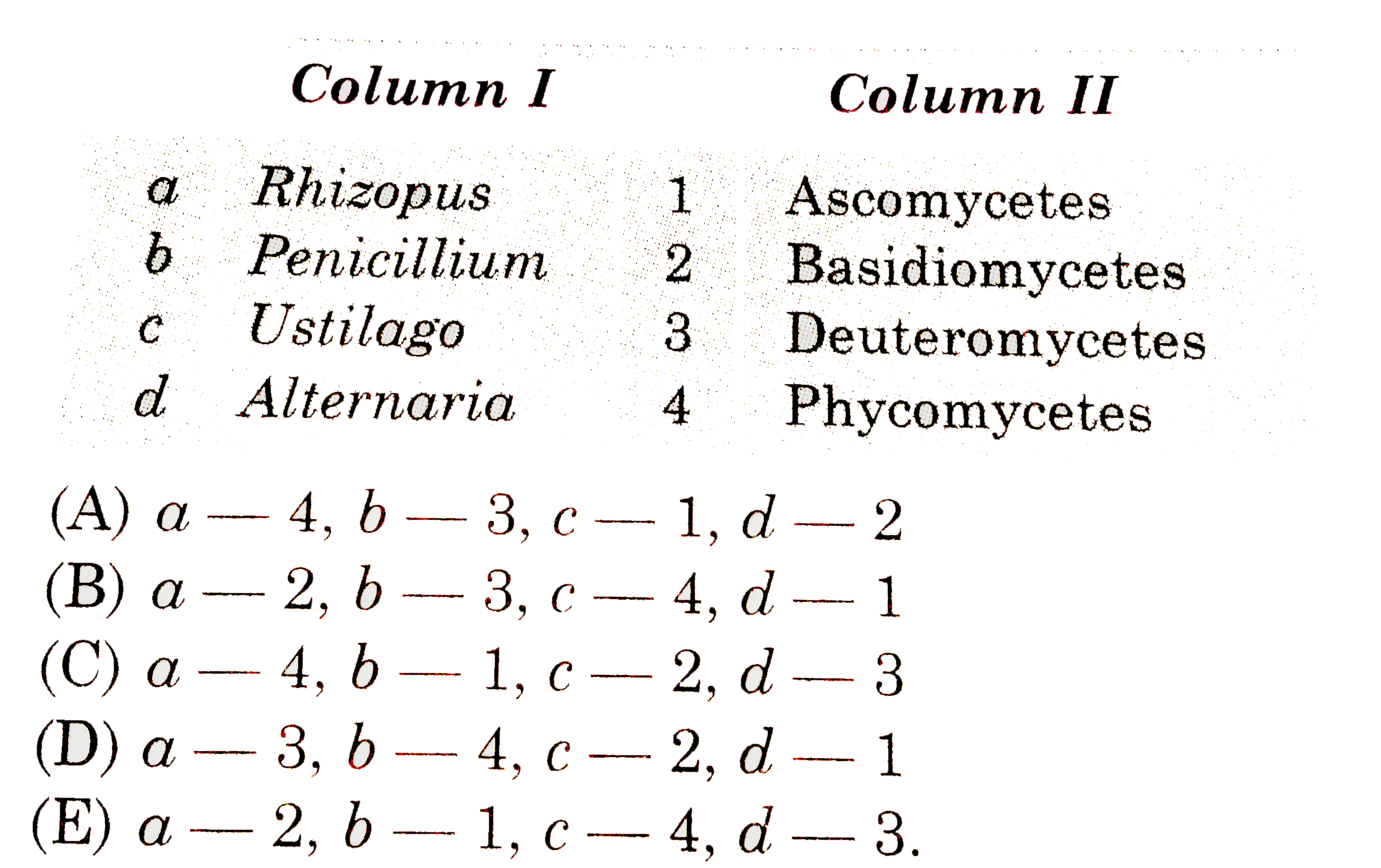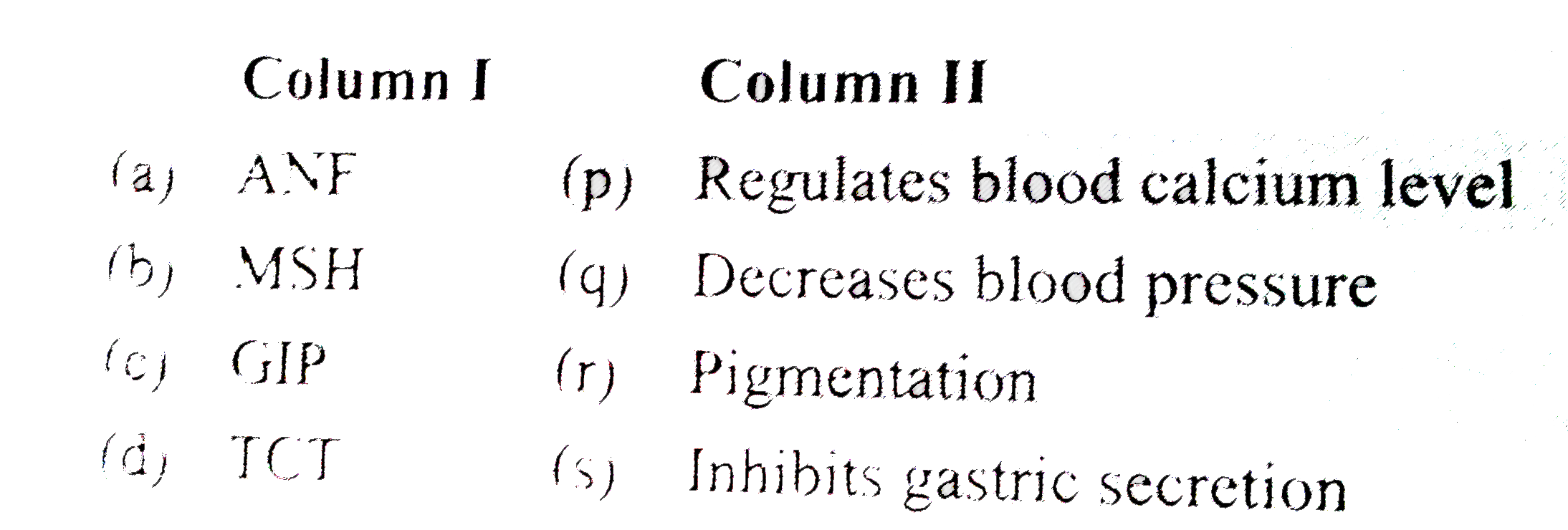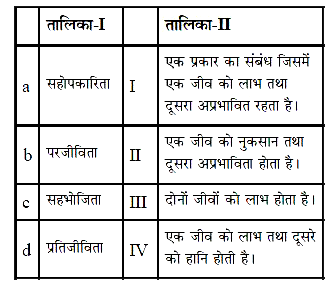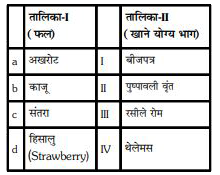Match and choose the true option
NaCl-Inorganic micromolecule
H2O-Organic micromolecule
Starch-Organic micromolecule
Glucose-inorganic micromolecule
The correct Answer is:A
To solve the question of matching and choosing the true option regarding the classification of molecules, we will follow these steps:
Step 1: Understand the Definitions
- Organic Molecules: These are compounds that contain carbon. Examples include carbohydrates, proteins, lipids, and nucleic acids.
- Inorganic Molecules: These do not contain carbon. Examples include salts, minerals, and water.
- Micromolecules: These are small molecules, typically monomers or simple compounds with low molecular weight. Examples include monosaccharides, amino acids, and water.
- Macromolecules: These are large molecules, typically polymers made up of many monomer units. Examples include starch, proteins, and nucleic acids.
Step 2: Analyze Each Option
1. Sodium Chloride (NaCl):
- Contains no carbon → Inorganic
- Simple ionic compound → Micromolecule
- Classification: Inorganic micromolecule (True)
2. Water (H2O):
- Contains no carbon → Inorganic
- Simple molecule → Micromolecule
- Classification: Inorganic micromolecule (True)
3. Starch:
- Contains carbon → Organic
- Polymer of glucose → Macromolecule
- Classification: Organic macromolecule (False)
4. Glucose (C6H12O6):
- Contains carbon → Organic
- Simple sugar → Micromolecule
- Classification: Organic micromolecule (True)
Step 3: Choose the True Option
From the analysis:
- Sodium Chloride is an inorganic micromolecule (True).
- Water is an inorganic micromolecule (True).
- Starch is an organic macromolecule (False).
- Glucose is an organic micromolecule (True).
The only option that is stated correctly in the question is:
- Sodium Chloride (NaCl) is an inorganic micromolecule.
Conclusion
The correct answer is Sodium Chloride (NaCl) as it is classified as an inorganic micromolecule.
---
- Organic Molecules: These are compounds that contain carbon. Examples include carbohydrates, proteins, lipids, and nucleic acids.
- Inorganic Molecules: These do not contain carbon. Examples include salts, minerals, and water.
- Micromolecules: These are small molecules, typically monomers or simple compounds with low molecular weight. Examples include monosaccharides, amino acids, and water.
- Macromolecules: These are large molecules, typically polymers made up of many monomer units. Examples include starch, proteins, and nucleic acids.
1. Sodium Chloride (NaCl):
- Contains no carbon → Inorganic
- Simple ionic compound → Micromolecule
- Classification: Inorganic micromolecule (True)
- Contains no carbon → Inorganic
- Simple molecule → Micromolecule
- Classification: Inorganic micromolecule (True)
- Contains carbon → Organic
- Polymer of glucose → Macromolecule
- Classification: Organic macromolecule (False)
- Contains carbon → Organic
- Simple sugar → Micromolecule
- Classification: Organic micromolecule (True)
From the analysis:
- Sodium Chloride is an inorganic micromolecule (True).
- Water is an inorganic micromolecule (True).
- Starch is an organic macromolecule (False).
- Glucose is an organic micromolecule (True).
- Sodium Chloride (NaCl) is an inorganic micromolecule.
The correct answer is Sodium Chloride (NaCl) as it is classified as an inorganic micromolecule.
Topper's Solved these Questions
- MOLECULES OF THE CELLBook:DINESH PUBLICATION ENGLISHChapter:MOLECULES OF THE CELLExercise:CYG
Explore 43 Videos
- MOLECULES OF THE CELLBook:DINESH PUBLICATION ENGLISHChapter:MOLECULES OF THE CELLExercise:CYG
Explore 43 Videos
- MICROBES IN HUMAN WELFAREBook:DINESH PUBLICATION ENGLISHChapter:MICROBES IN HUMAN WELFAREExercise:Brain Teasers-VIII
Explore 60 Videos
- MOLLUSCABook:DINESH PUBLICATION ENGLISHChapter:MOLLUSCAExercise:CYG
Explore 10 Videos
Similar Questions
Immediate source of energy is
View SolutionImmediate source of energy is
View SolutionHuman society started use of bronze/copper
View SolutionSiphuncle or living tube occurs in
View SolutionChoose the mis-matched option
View SolutionMatch the coumns and choose the right options

View SolutionMatch the columns and choose correct options.

View SolutionChoose the mis-matched option
View SolutionChoose the correctly matched option.
View SolutionChoose the correctly matched option.
View SolutionChoose the mis -matched option.
View Solutionसही मेल का विकल्प चुनना है
धनुष्टंकार
View Solutionसही मेल का विकल्प चुनना है
रेबीज
View Solutionतालिकाओं का मिलान करें तथा सही विकल्प चुनें :

View SolutionChoose the mis-matched option.
View Solutionतालिकाओं का मिलान करें तथा सही विकल्प चुनें :

View Solution
